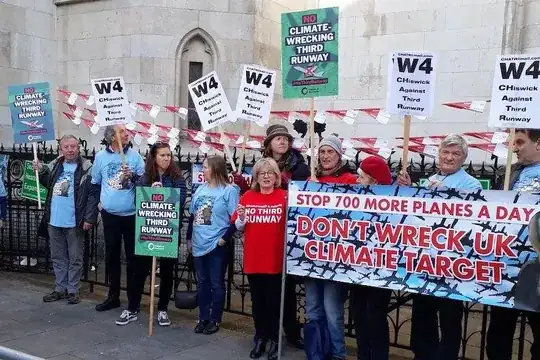Heathrow Airport has a "dedicated website" for the planned creation of an additional runway. From the dedicated website (emphasis added):
Heathrow Today
- 98% capacity – Flight movements at Heathrow are capped at 480,000/year
- 473,000 flight movements a year (2016) – an average of 1,300 a day
Heathrow Expansion:
- 740,000 flight movements capacity
Assuming the capacity in the expanded airport is still per year (as is explicitly stated on another Heathrow Airport website), there would be the capacity for an additional 260,000 flights per year. That is equivalent to ~712 flights per day offered by the additional capacity.
OAG, "an air travel intelligence company," predicts a total of 140,556 air traffic movements (ATMs). Their report is pretty comprehensive and includes long-haul, short-haul, etc. A single departure (and arrival) counts as one ATM. Thus, the increase of 140,556 ATMs is equivalent to 385 additional flights per day. Equivalently, 54.1% of the additional capacity is expected to be used, and not 100%.
To summarize:
Are 700 more planes a day expected to fly because of the Heathrow expansion, as the signs imply?
Maybe. In the short term, probably not. In the long term, probably yes. The expansion will increase the airport capacity by 712 flights per day. This is not a guarantee that 712 extra flights will occur a day. In fact, an airline analysis company predicts just 385 additional flights per day two years after the expansion. This figure is nowhere near 700.
To put the numbers into context, 2016 saw an average of ~1296 flights a day.
Assuming that (1) the 2016 number is accurate 2 years after the expansion and (2) the prediction (385 flights/day) mentioned above is accurate, two years after the expansion 22.9% of all flights will be from this new runway. The percent increase in flights will be 29.7%.
Assuming that in an unspecified number of years, (1) the 2016 number is still accurate for the first two runways and (2) there will be an additional 700 flights a day from the third runway, 35.1% of all flights will be from the new runway. The percent increase in flights will be 54.0%.
Additional comments for the interested reader:
The OAG report cited earlier specifically states (emphasis added):
In our cautious assessment of the opportunities, we project that over half of the new capacity could be used within two years from opening, if not faster allowing for existing carrier expansion.
What this means is that the projections are for two years after the expansion opens. Of course, the long-term environmental impacts of any airport expansion (which is probably what the protesters pictured in the question are interested in) last much longer than two years. Over the long term, it is indeed possible that the airport will be back at a full (or close to full) capacity. When the airport is at 98.3% capacity, there will be an increase of 700 flights, relative to now.
In 2014, the London Mayor's office wrote, in response to a study by York Aviation and Oxford Economics (emphasis added):
The analysis highlights how a third runway at Heathrow would fail to reverse the decline in regional connectivity and predicts that even with a third runway the number of domestic routes would be reduced by the loss of the existing Leeds/Bradford route. A third runway would fill up very quickly due to suppressed demand at Heathrow, which already runs at 99 per cent of its capacity. Pressure on airlines to use slots for the most profitable routes would then mean domestic services would be crowded out again, which would prohibit new routes being set up and mean that established services to cities like Manchester, Edinburgh, Glasgow and Newcastle would not be immune to a further loss of frequency.
More recently, a Wired article article published 9 June 2018 wrote:
But Warnock-Smith1 warns that Heathrow will eventually fill up again unless air travel is redistributed to make use of spare capacity at other UK airports. “Otherwise in 25 years, we will be having the same debates about a fourth runway at Heathrow,” he adds.
And from a Gov.UK blog about the filling of other London airports by 2030:
However, our airports are filling up. Heathrow has been running at full capacity for years. Evidence shows that the other London airports will be full by 2030. The need for increased capacity is ever-growing, and a policy was needed, especially in light of the UK’s decision to leave the European Union.
The Gov.UK post supports the previously cited two articles, as without excess capacity in London's other airports, they will have to turn to the now expanded and partly empty London Heathrow. The fact that London's airports are filling up and are predicted to be full by 2030 is also corroborated here (UK Department of Transport), here (London Assembly Transport Committee), and here (Greater London Authority).
Thus, there isn't doubt that, in the long term, the third runway can and will fill up. In this sense (that the runway expansion will "create" 700 more flights a day), the protesters are right to worry and their sign is accurate.
1Associate head of the School for Aviation and Security at Buckinghamshire New University
